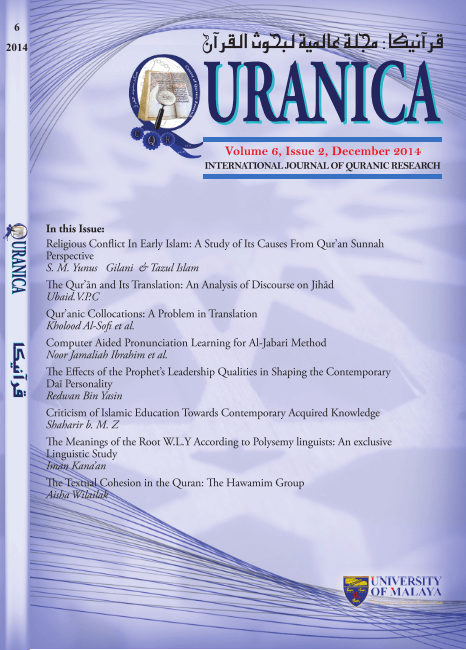Religious Conflict in Early Islam: A Study of its Causes from Quran Sunnah Perspective
Main Article Content
Abstract
This paper aims to present an historical survey on the conflict between Islam and other religions. It undertakes an analytic textual reading of the concerned Quranic verses and a historical survey of the Prophet’s (pbuh) efforts to resolution of the conflict. This study finds that a multi-dimensional causes contributed to the conflict between the Prophet Muhammad (pbuh) and other religions. For example, Religious roots which was mainly caused by the Christians and Jews’ denial of prophecy of Muhammad (pbuh) after a clear prediction of his prophethood in their religious scriptures. However, politico-economy was another key element of this conflict in the early Islamic state in Madinah. Though this conflict had come to broad daylight in the Islamic era, had a long pre-Islamic root go back to the second and third century CE. Moreover, Jews and Christians had a genuine fear of being defeated by the new emerging Muslim power. Therefore, they had found themselves in conflict so that they could reign their hegemony over the territory. In addition, after a city state was established in Madinah, the Prophet (pbuh) found a demographic presence of Jews and their ally Quraish threatening it peace, security, stability and even assassination of head of the state. Hence, the conflict had become inevitable.
Downloads
Article Details
Disclaimer
QURANICA makes every effort to ensure the accuracy of all its contents. However, opinions, discussions, views and recommendations are expressed in this journal do not necessarily reflect the official policy of QURANICA or views of its editors or publishers. Therefore, QURANICA and its publishers will not be liable for any controversy may be arisen. The journal reserves the right, at its sole discretion, to change its terms and conditions of publications.
Copyright
It is a condition of publication that manuscript submitted to the journal have not been published, accepted for publication, nor simultaneously submitted for publication elsewhere. By submitting a manuscript, the author(s) agrees that copyright for the article is transferred to the publisher, if and when the manuscript is accepted for publication.
